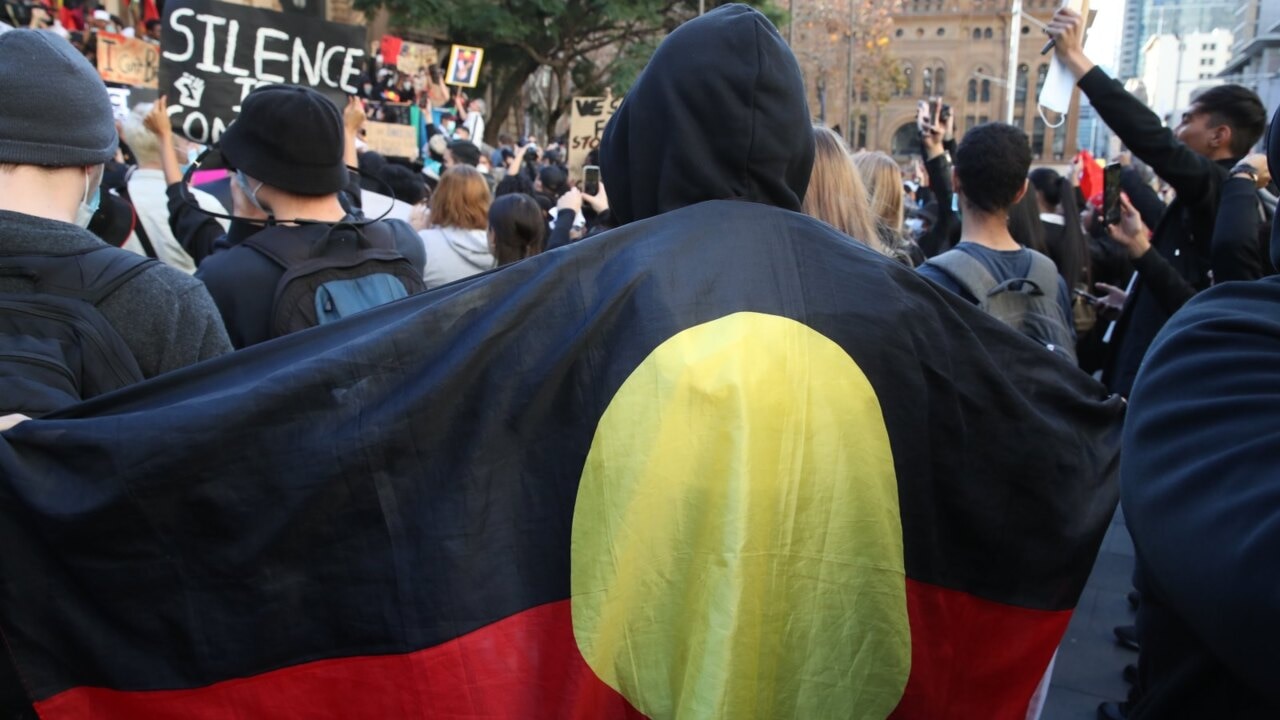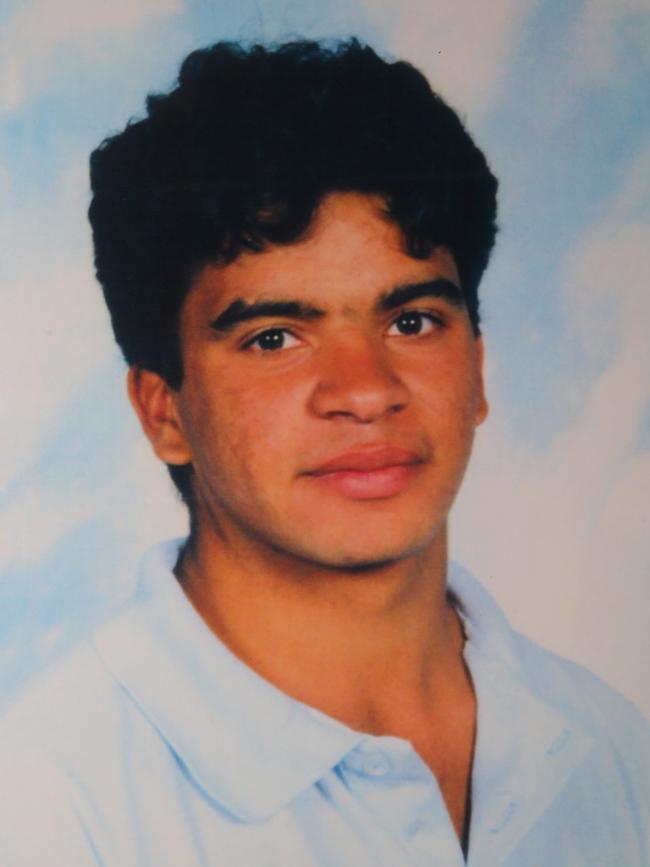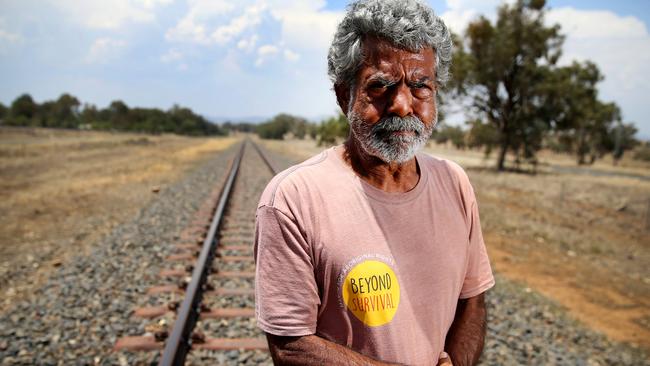Three families desperately search for answers as to why their sons died
Decades after their boys died on train tracks in regional NSW, three grieving families are still desperately searching for the reasons why, writes Gary Jubelin.

I Catch Killers
Don't miss out on the headlines from I Catch Killers. Followed categories will be added to My News.
Imagine getting a knock on your door by police and being told your teenage son has died after lying down on train tracks. Apart from the obvious devastation, you would want answers and expect his death to be thoroughly investigated. It’s not much to ask in the circumstances, it’s a basic right of any civilised society.
Police are tasked with investigating suspicious deaths, a responsibility that should never be taken lightly. Outside of actually protecting or preserving life, it’s the greatest responsibility given to police organisations.
But in three strikingly similar cases involving teenager boys all found dead on railway lines in regional NSW, so many questions remain unanswered. In my opinion, the investigations into the deaths of each of these boys was flawed. From evidence being burnt to autopsies not being conducted and potential suspects being interviewed together, there are so many things that make me feel uneasy about how the investigations were conducted.

Each in their own way failed the dead boys’ heartbroken families and that pain is still being felt decades later.
This weekend in Kempsey, 37 years after Lewis Kelly died on railway tracks near there, his family will be putting up posters asking for anyone to come forward with information in relation to his death.
On Sunday, the Smith family in Quirindi will be marking the 25th anniversary of their much loved son and brother, Stephen.
Meanwhile, there is a $500,000 reward still on offer for information on the tragic death of Mark Haines outside of Tamworth. Apart from dying on railway tracks, each of these boys
had one other thing in common.
They were Indigenous.
STEPHEN SMITH: 1995
OCTOBER 4 marks 25 years since 17-year-old Stephen Smith was found dead on railway tracks seven kilometres from the northwestern town of Quirindi. His death remains a mystery.
Stephen’s family cannot understand how their son ended up in that location.
“It just doesn’t make sense why or how he got there,” said his dad Stephen Smith Sr, who carries the same name as his son and the burden of not knowing what happened to the promising young footballer.

“The police destroyed Stephen’s clothes in an incinerator. They didn’t even ask us if we wanted them. It could have been evidence.”
An inquest concluded in February 1996 that Stephen was killed by a train, a finding that was never going to answer the questions so desperately sort by his family.
In 2016 the matter was reopened and police appealed to the public to help them identify two males in the vicinity of Stephen the night he was killed.
Jason Smith, Stephen’s brother who is fighting alongside his father to find out what happened,
said his parents deserve to know how Stephen died.
“Twenty-five years marks a quarter of a century and we still don’t know what happened to Stephen. Eyewitnesses say there were two people seen near Stephen on the night he disappeared and we haven’t identified who they are. It’s very frustrating. They may have answers to our questions,” Stephen told me this week.

“It breaks my heart to see the impact it has had on my parents. They are getting older and they deserve answers. We just hope talking about it will get someone to come forward.”
Last year, I followed Stephen’s father as he drove for kilometres along a desolate dirt road parallel to the railway tracks in the middle of nowhere. We stopped at the exact location where Stephen’s body was found. I could see the pain etched across his face as he described how his son’s body was found.
The thing that struck me about the location was that it just did not make sense that a young man would walk so far along a deserted road in the early hours of the morning and then just decide to lie down on railway tracks.
A two-day inquest at Tamworth Court House resulted in an open finding being handed down by
the coroner.
MARK HAINES: 1988
A FAMILY that understands the pain of the Smiths is that of Mark Haines. On January 16, 1988, seven years before Stephen’s death, Mark, also just 17, was found dead on train tracks outside of Tamworth. Despite two coronial inquests the Haines family still have no answers. Both inquests resulted in an open finding.

Mark’s family suspects there is something suspicious about his death. Their concerns about the investigation into his death resulted in police re-opening the case and a $500,000 reward being posted.
Mark’s uncle, Don Craig, is understandably still very angry about the initial investigation.
“We just needed the police to do their job, but they didn’t care,” Craig said. “They didn’t even search a stolen car found near where Mark’s body was found. I searched the car six weeks after Mark died, because the car was just sitting there.”

The crashed stolen Torana was located nearby to where Mark was found deceased.
His family worries there was no investigation into how the stolen car got there, pointing out Mark couldn’t drive and perhaps the stolen car was linked to his death.
LEWIS KELLY: 1983
FIVE years before Mark’s death on December 31, 1983, the family of Lewis (Buddy) Kelly, 16, confronted the same nightmare scenario when they were informed Buddy had died on the railway track at South Kempsey.
At a subsequent inquest the coroner concluded Buddy had drunkenly wandered onto the railway line before lying down. No autopsy was conducted on Buddy’s body and no blood alcohol reading was taken. Buddy’s sister, Monica Kelly, does not believe he would have taken his own life, but that is what is stated on his death certificate.

DOWNLOAD SERIES 1 OF THE I CATCH KILLERS PODCAST SERIES. SEASON 2 STARTS SUNDAY, OCTOBER 4.
“He had so much going for him, he was a gifted sportsman and was due to travel to America to compete in tennis tournaments,” Monica said.
Further adding to their concern is the fact that three potential witnesses were interviewed together about their knowledge of what happened to Buddy. The most basic rule in investigations is to separate witnesses, so their evidence is independent of each other. It seems inconceivable that witnesses were interviewed in each other’s presence.
As a result of campaigning by Buddy’s family, the state coroner referred the matter back to police.
“We now have permission to exhume Buddy’s body so an examination can be carried out. This is something that should have been done 36 years ago. We just need answers,” Monica said. The family will put up posters around Kempsey this weekend encouraging anyone with information to come forward to police. Previously they had asked the NSW Police to post a reward for information but that request was rejected.

“We need Buddy’s name and face out there in the community. We don’t want him to be forgotten and we want the people who know something about his death to come forward and speak to the police,” Monica said. “We put posters up around the town a couple of years ago and people started talking. It might be 37 years since Buddy died, but we won’t give up.”
WHY DID IT GO WRONG?
THERE is no suggestion these cases are forensically linked, but they do share something in common. The deceased children were all Indigenous and the families feel because of their Aboriginality the investigation into their deaths were not given the proper attention they should have been.
Some matters despite the best efforts of police simply can’t be solved. As unpalatable as that may be, at least families are comforted in the knowledge everything that can be done has been done to find out what happened to their loved one. This is not the case with the families of the three boys found on the railway tracks.
Not only have they lost their loved ones, they still don’t know what happened to them because they have no faith in the initial police investigations which can be described as perfunctory at best.
So, what went wrong? It appears unconscious biases and incorrect suppositions played a part in the way these three matters were investigated.
I would suggest that because the deceased children were Aboriginal it’s possible certain assumptions were made. Perhaps it did not seem inconceivable to police that Aboriginal teenage boys get drunk, wander off, and as a consequence of this, it’s possible they would just lay down on train tracks.

Greens MP David Shoebridge has taken a keen interest in all three cases and believes the families have not received the answers or the respect they deserved.
“Too many police looked at these deaths and said to themselves, ‘that’s just what Aboriginal boys do, they lie down and die on railway tracks’,” he said.
It’s this type of thinking that impacts on the quality of an investigation where things should never be assumed. Evidence should be gathered, critically analysed and hypotheses tested.
“I have been working with each of these families for a number of years now, and in each case one thing is clear to me. If their boys had been from a middle-class white neighbourhood their deaths would have been investigated with an urgency and a thoroughness that was fundamentally missing in each of their cases.”
I support the views of Mr Shoebridge. It is exactly what happened regarding the investigation into the serial killing of three Aboriginal children in Bowraville in late 1990-early 1991. The initial police response was inadequate and evidence was lost, because of biases and assumptions. As an ex-homicide detective, I am not suggesting the three teenage boys found on the railway tracks were murdered. I simply don’t know. What I am saying is the initial investigations into their deaths should have been more thorough. I don’t know if this would have provided the answers the family are seeking. But they would have known their lives matter, even if they are Aboriginal.

If that sounds familiar it’s probably because the chant of “Black Lives Matter” has been reverberating around the world. This does not just relate to deaths in custody it also relates to how Aboriginal people are treated in the justice system.
The Saturday Telegraph contacted NSW Police in regard to the status of the three investigations.
“Detectives from the Mid North Coast Police District continue to investigate the 1983 death of Lewis Kelly at South Kempsey under Strike Force Bolls,” a spokesman said. “As investigations are ongoing, no further information is available at this time.
“In April, detectives from Oxley Police District and the Homicide Squad conducted a review, which included the investigations into the 1988 death of Mark Haines (SF Puno) and the 1995 death of Stephen Smith (SF Resolve).
“Based on the information available, it was determined that all avenues of inquiry had been exhausted and the boys’ deaths were not linked.
“Both boys’ families, who were being updated throughout the investigation, were informed of the review outcomes.
“While the investigations are not currently active, police remain at the ready to explore any new information in relation the deaths should it become available.”
Anyone who has any information regarding the deaths of Stephen Smith, Mark Haines and Lewis Kelly should contact Crime Stoppers.
GARY JUBELIN’S PODCAST SERIES I CATCH KILLERS RETURNS ON OCTOBER 4. FOR SUBSCRIBER EXCLUSIVE ACCESS VISIT ICATCHKILLERS.COM.AU
Originally published as Three families desperately search for answers as to why their sons died
